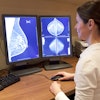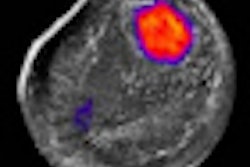Patients with a diagnosis of advanced cancer continue to undergo common cancer screening tests that are unlikely to be beneficial, according to a study published October 12 in the Journal of the American Medical Association.
Researchers at Memorial Sloan-Kettering Cancer Center in New York City examined the extent to which patients with advanced cancer continue to undergo screening for new cancers, and they also identified characteristics associated with that screening (JAMA, October 13, 2010, Vol. 304:14, pp. 1584-1591).
Lead author Camelia Sima, MD, and colleagues included data on 87,736 fee-for-service Medicare enrollees ages 65 years or older diagnosed with advanced lung, colorectal, pancreatic, gastroesophageal, or breast cancer between 1998 and 2005, with all cases reported to one of the Surveillance, Epidemiology, and End Results (SEER) tumor registries. The team followed these participants until death or December 2007, whichever came first.
They were matched by demographic criteria to a group of 87,307 Medicare enrollees without cancer and observed over the same period to evaluate screening rates in context. The team tracked use of cancer screening procedures such as mammography, Pap smear, prostate-specific antigen (PSA) testing, and lower gastrointestinal endoscopy.
For each cancer screening test, utilization rates were defined as the percentage of patients who were screened following the diagnosis of an incurable cancer, Sima and colleagues wrote.
Among women with advanced cancer, 8.9% received at least one screening mammogram and 5.8% received at least one Pap test, compared with 22% and 12.5% of controls, respectively. Rates were higher in the group of women who had a history of the same screening test (16.2% of these women had mammography and 14.7% had a Pap test) and among women 65 to 69 years old (12.9% had mammography and 9.4% had a Pap test).
As for men with advanced cancer, 15% underwent PSA testing compared with 27.2% of men without advanced cancer. Among men with a PSA screening history, 23.3% were also screened postdiagnosis, they wrote.
Lower GI endoscopy was performed in 1.7% of all patients with cancer and in 6.1% of patients with a precancer screening history. In contrast, 4.7% of controls received lower GI endoscopy screening.
Half the patients who received mammograms, Pap tests, or PSA tests did so within 10 months of cancer diagnosis, and half of patients who received lower GI endoscopy screening received it within 18 months of diagnosis, Sima's team found. Higher socioeconomic status and married status were associated with a higher probability of screening for each test evaluated, as was the receipt of a screening test before diagnosis, they wrote.
"The most plausible interpretation of our data is that efforts to foster adherence to screening have led to deeply ingrained habits," the authors wrote.
By Kate Madden Yee
AuntMinnie.com staff writer
October 12, 2010
Related Reading
Screening high-risk patients catches pancreatic cancer at resectable stage, October 7, 2010
ACR endorses mammo for women 40-49, September 30, 2010
Bundling of CAD software boosts lung lesion detection at CT, September 21, 2010
Study finds VC cost-effective if tiny polyps are ignored, September 9, 2010
The breast screening hullabaloo: Where are we today? August 19, 2010
Copyright © 2010 AuntMinnie.com




















